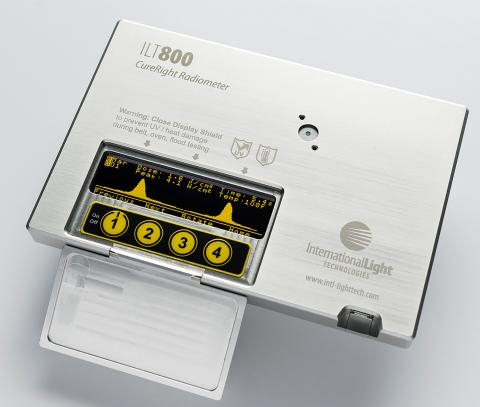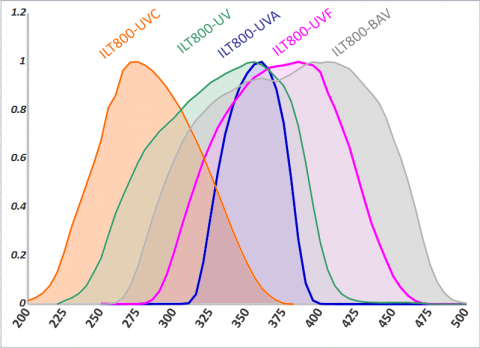ILT800-UVC
The ILT800-UVC from International Light has been designed with UVGI, UV curing, and other LED measurement applications in mind. The device can measure a wide range of UV LED sources including UVA, UVB and UVC LED sources found in spot, conveyor, flood, chamber, and fibre optics. Measures UV sources from 215 – 350 nm.
ILT800-UV
The ILT800-UV belt radiometer is the replacement for International Light’s popular ILT390, ILT393, and ILT490 Light Bug belt radiometers. The ILT800 offers faster measurement speeds, data storage, and connectivity to PC. Measures light from light from (250 – 400 nm) with the same filter and sensor as ILT’s historical products.
ILT800-UVA
The ILT800-UVA CureRight Radiometer is International Light’s meter for measuring UVA for curing applications. Measures a wide array of sources including UVA LEDs, spot lights, flood lights, and belt/conveyor/chamber systems. Measures UVA sources from 315 – 390 nm.
ILT800-UVF
The ILT800-UVF Hand-Held UV LED Light Meter from International Light has been designed specifically to measure UV LED sources including individual chips, LED arrays, spot lights, curing lamps, conveyor/belt systems, chambers, fibre optic light guides, curing wands, and more. The UVF model is designed for near flat (uniform) sensitivity for UVA LEDs in the range of 360 – 400 nm, while also covering a broader range from 300 to 450 nm, often required for traditional lamps.
ILT800-BAV
The ILT800-BAV CureRight Belt Radiometer is International Light’s meter for taking both UV and VIS light measurements. Measures a wide range of UV sources from 275 – 475 nm.
Response Curves for ILT800
The ILT800 spectral filtration was designed to match the photoinitiators’ response to UV light which is directly related to its absorption, and is very wavelength selective. Most lamps emit broadband UV/VIS/IR, and the lamp’s output may not change evenly over all wavelengths. The ILT800 filters were designed to monitor changes in output in the areas that effect the absorption, and in turn, the effectiveness of the curing.


